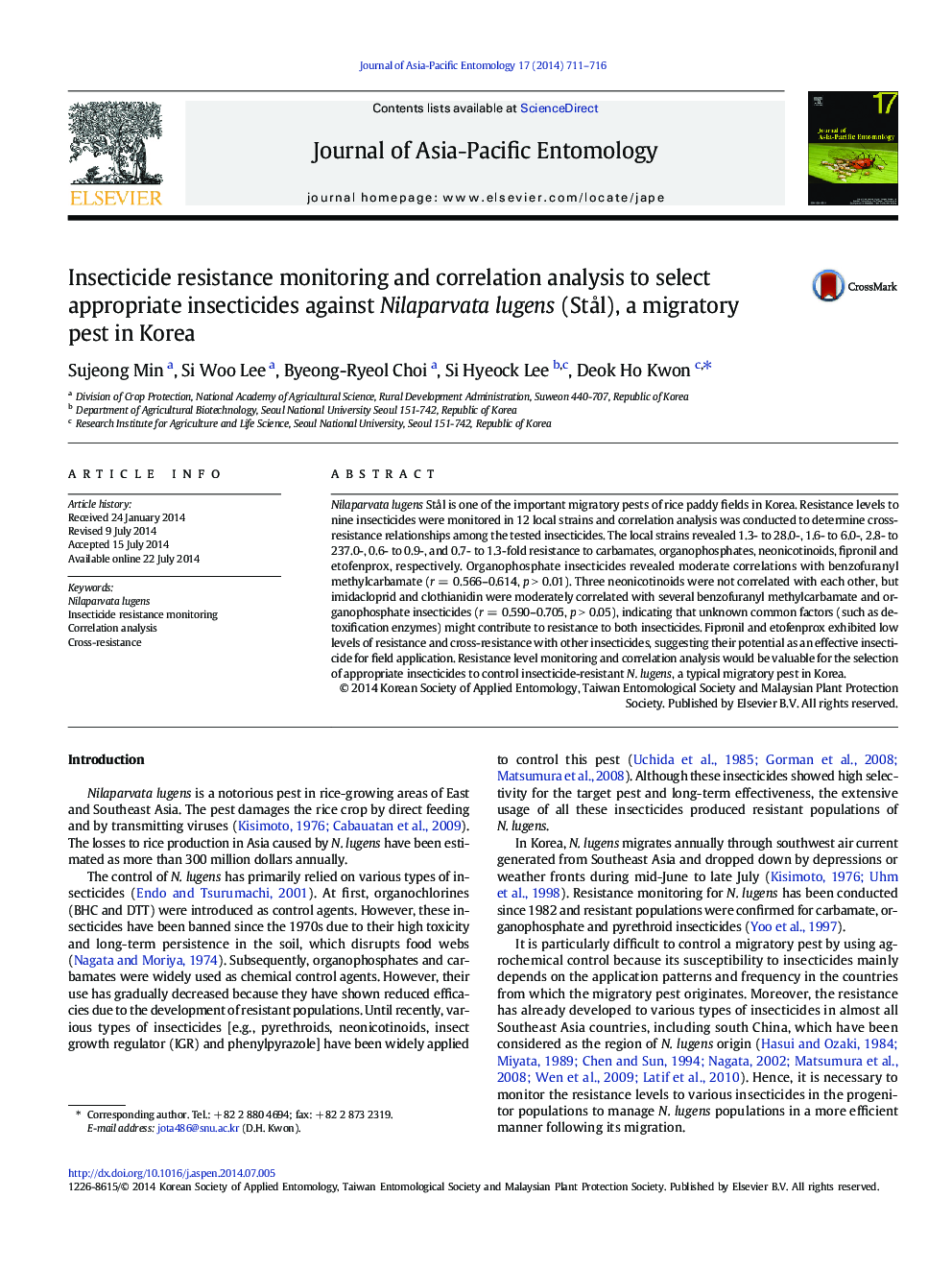| Article ID | Journal | Published Year | Pages | File Type |
|---|---|---|---|---|
| 4524544 | Journal of Asia-Pacific Entomology | 2014 | 6 Pages |
•Resistance monitoring is necessary to control Nilaparvata lugens in Korea.•Most Korean populations exhibited resistance except fipronil and etofenprox.•Korean populations revealed the highest resistance to imidacloprid (78.4-fold).•Correlation analysis might be informative for selecting appropriate insecticides.
Nilaparvata lugens Stål is one of the important migratory pests of rice paddy fields in Korea. Resistance levels to nine insecticides were monitored in 12 local strains and correlation analysis was conducted to determine cross-resistance relationships among the tested insecticides. The local strains revealed 1.3- to 28.0-, 1.6- to 6.0-, 2.8- to 237.0-, 0.6- to 0.9-, and 0.7- to 1.3-fold resistance to carbamates, organophosphates, neonicotinoids, fipronil and etofenprox, respectively. Organophosphate insecticides revealed moderate correlations with benzofuranyl methylcarbamate (r = 0.566–0.614, p > 0.01). Three neonicotinoids were not correlated with each other, but imidacloprid and clothianidin were moderately correlated with several benzofuranyl methylcarbamate and organophosphate insecticides (r = 0.590–0.705, p > 0.05), indicating that unknown common factors (such as detoxification enzymes) might contribute to resistance to both insecticides. Fipronil and etofenprox exhibited low levels of resistance and cross-resistance with other insecticides, suggesting their potential as an effective insecticide for field application. Resistance level monitoring and correlation analysis would be valuable for the selection of appropriate insecticides to control insecticide-resistant N. lugens, a typical migratory pest in Korea.
Graphical abstractFigure optionsDownload full-size imageDownload as PowerPoint slide
